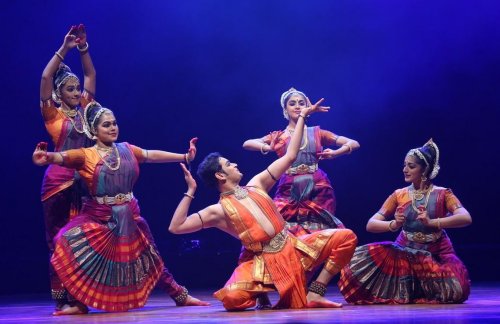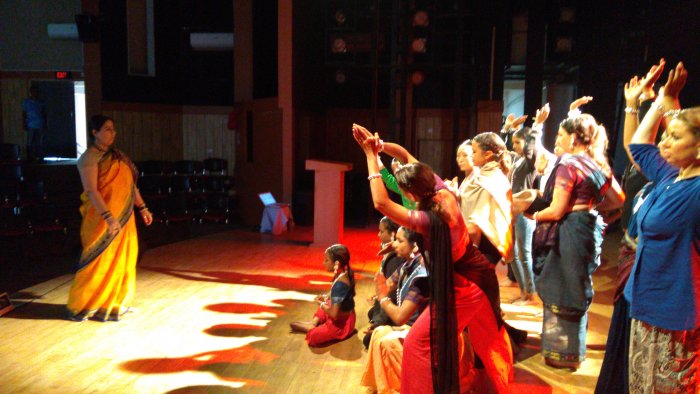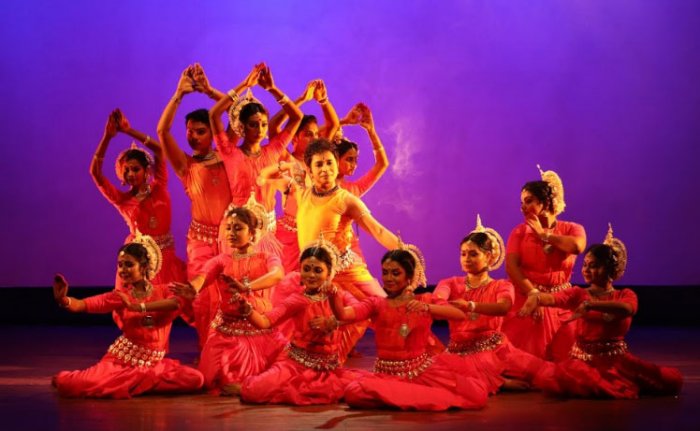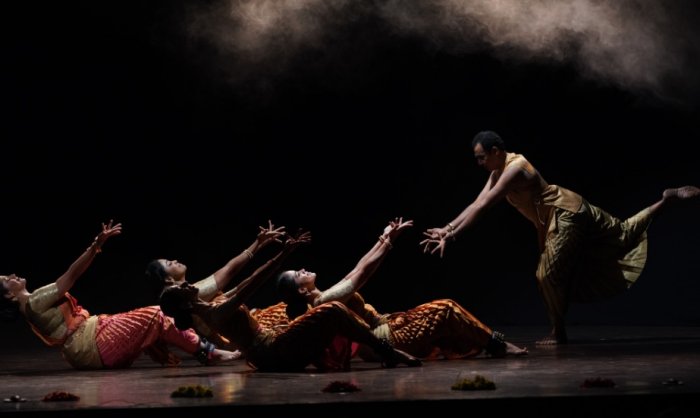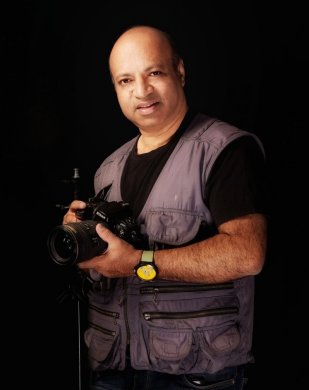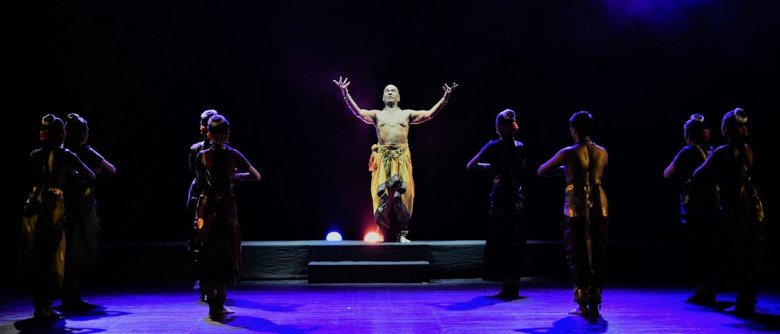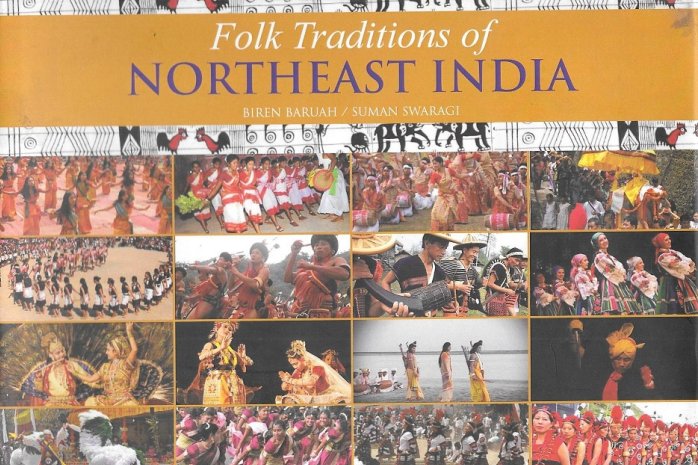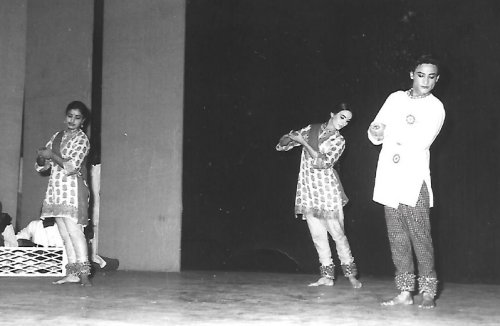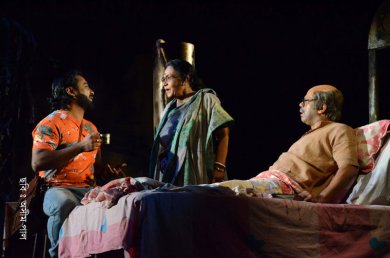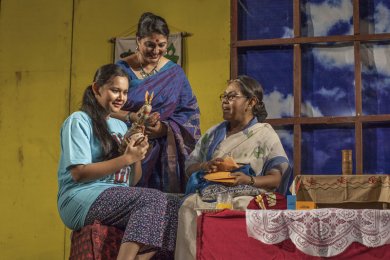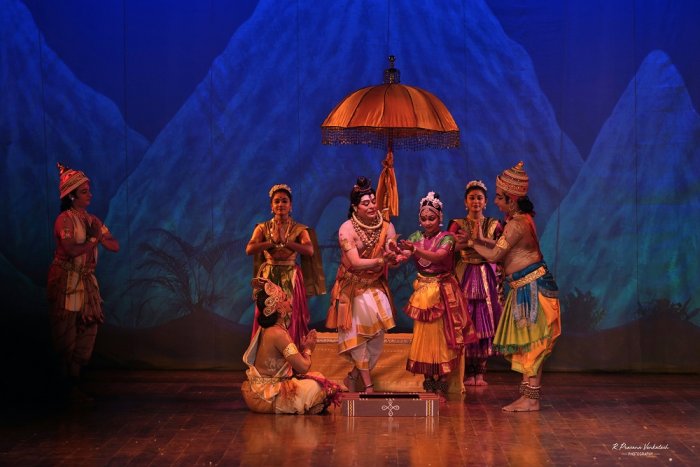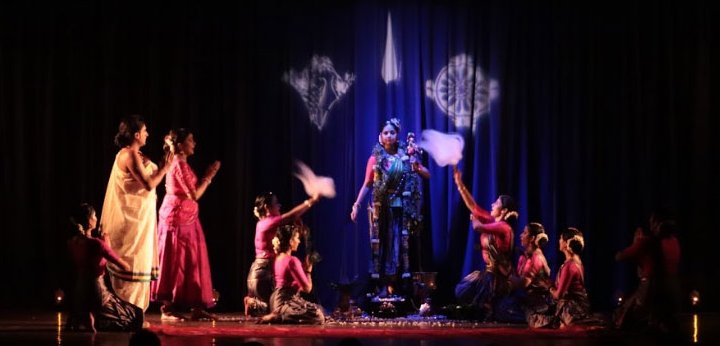Drishti Art Centre was established in 2001 by Bharatanatyam exponent Anuradha Vikranth at Sahakar Nagar, Bengaluru to offer holistic training in Bharatanatyam. She has nearly 400 students taking training in the classical dance form. As a centre imparting training in dance, it has received the National Excellence Award 2019 by the National Press Council of India Newspapers Association of Karnataka. The Drishti Art Centre also offers training in yoga and music. They arrange a biennale event titled Nrityarpana.The Drishti National Dance Festival is an annual event which Bengaluru rasikas look forward to attending. With a commendable background and experience of more than two decades, the present 15th National Dance Festival titled Bharata Nritya Vaibhava curated by Anuradha Vikranth featuring 15 dance styles, held on 11th January at Chowdiah Memorial Hall, was a spectacular event.
Read more in the site
Hot on the heels of the 39th Natya Kala Conference came the 14th edition of The Music Academy's dance festival from 3rd till 9th January 2020 at their spacious and well equipped auditorium with light and sound system. This year's festival had added features: one more slot at 2pm for dancers. There were three interactive sessions with three dancers on three days from 4pm till 5.30pm at one of the committee rooms, where participants were served coffee on the house. Prior registration was arranged and slips were required to be dropped in a box. Those whose slips were selected could attend the session for dialogue with the dancers.There were panel discussions on three mornings from 8.30am till 10am, followed by 10am and 11. 30am slots for dance. After lunch, the new 2pm slot made it quite taxing and also exhausting! Whatever may be the reason that Academy has planned this additional slot, whereby 6 more dancers could be accommodated, they will have to rethink the timing in order for public to attend the post lunch performance. The evening sessions from 6pm to 7.30pm and 7.45pm till 9.15pm were ticketed as usual whereas all other sessions are free for the public.This festival has acquired reputation for featuring the best of the classical dancers. Therefore die-hard followers plan to attend well in advance. Some of us ventured to attend all sessions. No wonder, when I am trying to review the performances which I saw during the seven days, I am dead exhausted and my mind is full of overlapping images of endless varnams, padams, tillanas and what have you. The saturation point naturally starts working upon onlookers.
Read more in the site
A for art, aesthetics, A grade. And in Bharatanatyam it is Alarmel Valli. That's the real A list. And what a mature, meaningful opening to the New Year's season it was at Music Academy Dance Festival....
B for bad scheduling....
C for can you spot the difference between potential and possibility?...
D for diva Dr. Kanak Rele...
Read more in the site
Did man's not-too-distant animal forefathers have a sense of rhythm and like to dance to music? It would certainly seem so, as the latest research at Kyoto University suggests, from their experiments with seven chimpanzees who, incidentally, have as many as 93 per cent (perhaps more) of genes in common with their human progeny. Although none of the primates had been taught to groove and received any rewards for doing so, they still broke out into spontaneous movement -- by clapping hands, tapping feet and swaying along - when played bursts of tunes on piano!The consummate way in which both nritya and nritta of Indian classical dances are linked to the geetam and vadyam of the land, appears to recognize this heritage, in being beautifully integrated in their conceptualizations and aesthetics, as well as in their manifestation, as it struck this critic once again, while watching some of the recent dance performances in the eastern metropolis.
Read more in the site
(Translated from the original Telugu into English by Sreelakshmi)The one work of literature that effectively brings home the quintessence of Kuchipudi is the iconic Bhamakalapam. In the vast and powerful repository of Telugu literature, this is the very first drsya prabhandha kavya (visual poetic treatise) composed, a gem of undying brilliance in its diadem.On the 9th of January 2020, one witnessed the presentation of Bhamakalapam under the aegis of Sri Sai Nataraja Academy of Kuchipudi dance. Organized in the Ravindra Bharati auditorium, Hyderabad, the role of Satyabhama was played by Dr. Rama Devi (Director, Sri Sai Nataraja Academy of Kuchipudi dance). The rest of the cast included Rajeshwari (student of Dr. Rama Devi and currently pursuing MA in Telugu University) as Krishna and the role of the sutradhara (narrator) was donned by Dr. Pasumarthi Seshubabu. The program was well supported by a capable orchestra.
Read more in the site
Initiated in 2013, Malavika Sarukkai's Kalavaahini Trust in its effort at positive and successful support for dance, which represents a critical part of India's cultural heritage, has worked at creating a platform for art which has excellence as its guiding principle, which motto extends to the organisational effort to ensuring hassle- free conditions for the artiste so as to enable the best contribution.
Read more in the site
Bangalore based Srivatsa Shandilya has been a performing arts photographer for almost 35 years. With an Engineering in computer science background, he worked in the technology media space as a photographer and was instrumental in showcasing the Indian IT growth. From 1995, he was a photographer for a technology magazine. The ever versatile Srivatsa is also a well known glamour and fashion photographer. He has clicked virtually all cine stars of the Kannada film industry and several of these images have been published in leading newspapers like the Times of India.
Read more in the site
Anita Ratnam in association with Brahma Gana Sabha presented her A List Series featuring three artists - Shanmuga Sundaram, Indira Kadambi and Mansavini Ramachandran - on January 2, 2020 in Chennai. In an attempt to create among fellow artists and public, awareness to support artistes by making it a paid program, the series received good response.Currently under mentorship of Chitra Visweswaran, Shanmugham is developing finer and subtle nuances of Vazhuvoor bani. He has been performing for past twenty years and has a sound grounding in the said bani under the legendary K.J. Sarasa. For the evening he had carefully selected from Shaiva and Vaishnava repertoire in Tamizh, choreographed by K.J. Sarasa. This was re-visited and re-edited by Chitra. It comprised of two Theva Padhigams - Kunitha Puruvamum of Thirunavukkarasar. It was followed by Thodudaiya Saviyan of Thirugnana Sambandar in raga Gambeera Nattai and adi tala.
Read more in the site
We begin from the end of the performance, after the audience is moving out, when you see the lights being dismantled, the wires being wound and all the equipment being taken apart. And in the middle of this, you see this inconspicuous person who's directing the entire thing, and all that you have seen of him is when he comes on stage at the end for the credits. It is then that you realize how the special effects in the performance were brought out using the lights, how the dancer's emotions in her solo were so wonderfully clear to you, how the spotlight followed the dancer and the colours of the lights changed with the hues of the rasas.
Lights designer Sandeep Dutta is one of the most well-known names in Delhi's cultural circles. He has worked on shows for some of the eminent dancers and musicians, both those from Delhi and those performing in Delhi. Light design is integral to creating the right mood and atmosphere in a performance. My photographer husband and I interviewed Sandeep Dutta to find out how he designs the lights for different productions, the challenges for light design in the Indian scenario, and the prospects in the profession.
How did you get started in the profession?
We came to Delhi in 1986 from UP. My father was a doctor and we had a house in Delhi, so when he retired, we shifted to Delhi. After schooling, I did Electronics from IETE. I was looking for something constructive at that time. Fortunately, I met Gautam Bhattacharya, who became my guru and mentor. We stayed in the same colony and would meet often. He suggested taking up light designing as a career. But at that time, my parents had not heard of light designing. So initially, my father refused.
Read more in the site
Alarippu Adventures was an exciting session offering an excellent example of youngsters pushing the creative envelope with discoveries, egged on by their unbound curiosity. And they have found an excellent fellow traveller in Ramamoorthy Ganesh, the mridangist, who provided the ideal rhythmic arithmetical springboard. The Alarippu has within its rhythmic frame the versatility of accommodating different ideas in different nadais and talas, with a few like the Mayur Alarippu already known. Preeti Ramaprasad made it the Navarasa Alarippu, with the nine emotions. Christopher Guruswamy's Misrajati chemba talam Alarippu was based on Garuda, the choreography influenced by what he saw in the Ram Gopal Dance Museum in Indonesia and Rukmini Devi's Jatayu Moksham in the Ramayana Series. The ' Dhit Tam' with the eyes of the Garuda looking hither and thither and the arms in a wide wing spread were very fitting. Harinie Jeevitha's Nritta Keli wherein she showed different games in Alarippu in chatusrajati dhruva talam, was another fine effort. Radhe Jaggi in a khanda jati Alarippu drew the outlines of a temple with entrance, gopuram and sannadhi. It is the working of the various minds which was very invigorating to behold!
Read more in the site
The 'pay for the Arts' drive of the convenor Rama Vaidyanathan and Aalaap, the creative collaborator, would seem to have fetched handsome results, for rarely has Krishna Gana Sabha's annual Natya Kala Conference (Dec 26-30, 2019) attracted the kind of 'sold out' auditorium experienced this year, with literally every seat occupied, notwithstanding an entry ticket for being part of each day's proceedings. O.S. Arun's dramatic entry from the auditorium to the stage singing the Ranga Stuti of the Abhinaya Darpana, heralded the start, with the welcome address by Shashwati Prabhu nostalgically recalling how the start of the Conference as an educative and interactive experience had begun in 1974 with Padma Subrahmanyam being conferred the Nritya Choodamani. This year's conference with Dr. Sonal Mansingh, Member of Parliament, Rajya Sabha as Chief guest, the award of 'Natya Kala Visharada ha' was conferred on Ranganayaki Jayaraman for her selfless teaching of Bharatanatyam, particularly among the under privileged sections of society.
Read more in the site
Folk Traditions of Northeast India
By Biren Baruah and Suman SwaragiShubhi Publications479, Sector 14, Gurugram-122 001, Haryanae-mail: shubhipublications@yahoo.co.inISBN: 9788182903074Price Rs. 1495"The Seven Sisters" of the North-East India (comprising Arunachal Pradesh, Nagaland, Manipur, Meghalaya, Tripura, Mizoram and the large state of Assam), plus the native kingdom of Sikkim added in 1975- with their low-lying Khasi, Jaintia, Lushai, Garo and Naga Hills, and the sprawling Barrack and Brahmaputra Valleys - offer an undulating physical topography. This beauteous landscape offers a human settlement that dates back to the Austro-Asiatic languages, followed by Tibeto-Burmese population and then the Indo-Aryan speakers from the Gangetic plains, half a millennium before Christ.
Read more in the site
Life can change in a split second. Mine certainly did. I was studying Russian language and literature, preparing for a career in academia or international politics. But after seeing Birju Maharaj dance in 1963, I made an about-face. At that time he was called "Maharaj-ji" by all. The honorific "Pandit-ji" came later. Yet there was never a question in my mind, that whatever he was called, Maharaj-ji was a charismatic performer and compelling communicator, and I would study Kathak with him.Trained in Western flute and piano for thirteen years starting at age five, I had been entranced by the musicality of a few lines of poetry composed by the 19th century Russian writer Pushkin. The subject was love, of course. Ya vas lyubul... "I loved you and perhaps this love has not yet died..." The sound of the words, the musicality of a language whose verb and noun endings could create unforced rhymes, the still-living tradition of memorizing and reciting poetry as a natural extension of human speech - I loved it all.
Read more in the site
A time was when the joint family system in Indian society took care of the elders of the family, there being always some siblings who would take care of the aged parents. After the nuclear family emerged in the society's industrial and post-industrial phases, the children, after receiving childhood education, necessarily drifted apart from their parents to settle in the new places of employment, leaving the elders severely alone. In metropolises like Kolkata, there are innumerable cases where the children either earn their livelihood at faraway places like Bangalore or have moved abroad, giving rise to a severe social problem: that of urban loneliness.One solution to this malady has been a chain of usually ill-kept "old age homes" where the deserted parents would move to live in a brand new habitat, enlivened by generally rare social visits by the now estranged siblings at their own convenience. In cases where parents - normally with strong willpower - stuck to continue in their own homes, the siblings would not hesitate to milk them if they have any marginal utility left still. Alternatively, the new-age "promoters" would hover round them almost like vultures and attempt uprooting them, to grab the property for raising multi-storied structures. The ace director Sima Mukhopadhyay has looked at some of these vulnerable situations with great empathy and gifted the Kolkata viewers two 'clinical' studies done with an unerring scalpel.
Read more in the site
Come December and some of us from the Capital plan well in advance to move to Chennai for the 'season' now extending from December to January and at times further extending to February also. Of late, the main reasons are also to escape the Delhi winter with extreme cold and pollution. Chennai weather is far better than what we suffer at Delhi. And it also extends to February. The city is all abuzz with music and whatsApp is bombarded with announcements of several performances, enthusiastic dancers post videos and clog our cell phones. The incessant postings tire one's patience. Social media has become an easy tool for advertisement, though, in a way, it helps one to select in advance what one would like to see and attend!
Read more in the site
Anita Ratnam has called her work 'Naachiyar Next,' an amplification and reworked version of what she first presented in 2003 under Arangham Trust. Not having seen the earlier production, one can only comment on what was premiered as a changed version of the original, by a now more experienced choreographer, at the Krishna Gana Sabha, as elegant and refreshingly different from what one is normally treated to - amidst countless dance works woven round the theme of Nachiyar /Goda and Andal's Tiruppavai. As a strong voice of feminism over a thousand years old, Andal's appeal has not dimmed with time. Anita's lifelong fascination for Andal and what she represents has made her revisit for expression, the subject of her life and poetry over and over again- the latest being an hour and a quarter of enthralling dance theatre which communicates across regional and cultural frontiers
Read more in the site
Love one another but
Make not a bond of love
Let it rather be a moving sea
Between the shores
Of your souls- Kahlil Gibran, poetWelcome to a brand NEW YEAR and the start of a NEW DECADE !The last month of the year brought such a whirlwind of contrasting experiences that I am still breathless from the tsunami of visuals and sounds that have hit me for the past 31 days.From devout crowds at my ancestral temple, to an urban library where John Lennon met Andal; from being spellbound by a flute next to the ocean to eyes moistening as I watched a mother sing baby Krishna to sleep while narrating the Ramayana - this has been an overwhelming month for me.As patron, presenter, producer, performer, speaker, writer, host and single parent- all the while maintaining a calm demeanour - HAS NOT BEEN EASY.Amidst the chaos of daily protests and arrests across India due to the Citizenship Amendment Bill (CAB) a month of singing and dancing seemed at odds with the reality of our daily lives. But then the Chennai Margazhi season chugs on...And just in case you were thinking that ALL roads lead to Chennai in December, there is slight modification. Only certain parts of Chennai celebrate MARGAZHI. Go beyond Gemini Circle to areas like Nungambakkam and Kilpauk and you will be asked, "What is happening? What Season?"This online dance portal began at the dawn of the millennium and it is already in its 3rd decade!And how much our dance lives have changed!And the most evident indicator has been the recently concluded NATYA KALA CONFERENCE at Krishna Gana Sabha.
Read on...
